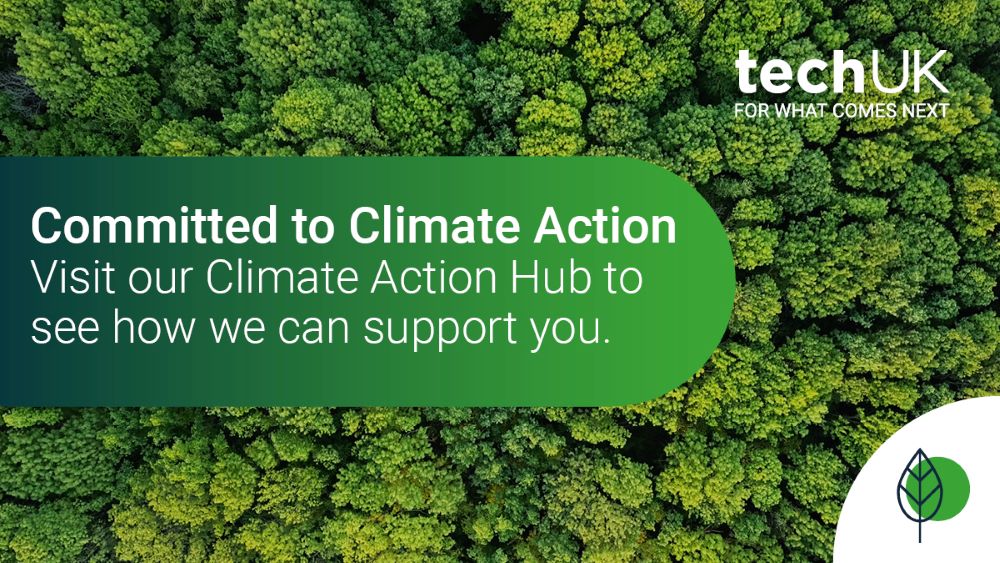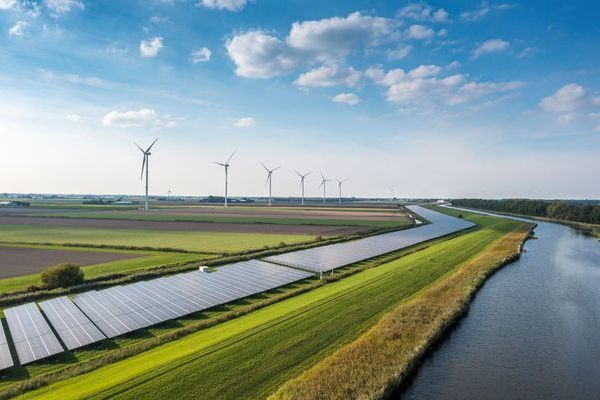Guest Blog: Greening AI, A Policy Agenda for the AI and Energy Revolutions
We are at the beginning of a new age. The accelerating pace of artificial intelligence development presents new opportunities. Every industry will be profoundly reshaped by this general-purpose technology, and discovering novel solutions to the world’s most intractable challenges, such as climate change, will become possible. Governments have a unique opportunity to take action.
As demand for AI has grown, so too has demand for energy. This has created strains on national energy networks, which need to be managed in the short term. But in the medium to long term, the two systems need not be in tension. Instead, each can offer the chance of success in the other. The revolutions taking place in AI and energy are interconnected.
With the right strategy, these twin transitions can create a positive loop in which AI speeds up the energy transition while subsequent clean-energy production fuels further technological innovation, unleashing investments into compute infrastructure and clean technologies.
Many actors in the private sector are already aware of this interplay between clean-energy developments and innovation advancements. Developers are intensely focused on cutting energy demand, while companies such as Nvidia, Microsoft and Google are investing heavily in reducing consumption and increasing clean energy. Political leaders need to continue to create the incentives for companies to move in the direction of the twin transitions with a policy agenda that aims to minimise AI’s energy and carbon costs while maximising its benefits.
Unlocking the positive loop at scale requires a bargain between the public and private sectors: governments need to make it easy for companies to innovate and adopt greener AI techniques and the private sector needs to rachet up investments in clean-energy development and energy-efficiency R&D. This focus has to be emphasised across the whole AI value chain – from the electricity grid and power sources to hardware, software and end use – to bend the energy demand curve and unlock the positive loop.
While circumstances and priorities will vary from country to country, it is clear that governments pursuing success in AI and in climate policy face similar challenges. Practical action is needed in five core areas:
- Build foundational government capacity: This should include mechanisms at the centre of government that drive national AI efforts and integrate green AI. Investing in collaboration between government, academia and the private sector will also help governments build the right technical expertise and governance frameworks to unlock the positive loop. To meet AI’s growing energy requirements, governments also need to build energy infrastructure and power generation that incorporates AI energy-demand forecasts.
- Identify the scale of the problem: Governments need to establish and adopt best-practice metrics for reporting on carbon emissions and energy consumption across the AI value chain. Doing so can fill existing measurement and accountability gaps that currently hinder governments’ abilities to create the right kinds of policies and R&D investments needed to unlock the positive loop.
- Use agile policies and targets to incentivise greener practices: Because the AI revolution is progressing rapidly, governments need to develop innovative, flexible planning and permitting criteria that support private-sector investment in and adoption of clean-energy technologies, while also creating a green-AI certification scheme that incentivises environmentally friendly practices through evidence-based targets. Elements of this could be made mandatory over time if incentives and supportive regulatory environments prove insufficient.
- Create better alternatives: Governments need to facilitate private sector innovation in advanced energy solutions like nuclear and geothermal to ensure AI and energy-system investments go hand in hand. Governments also need to increase R&D investments in green-AI hardware and software to identify new energy-efficient solutions; promote open-source AI models to reduce resource-intensive training phases; and dedicate a portion of the national compute pool for green AI research.
- Collaborate and coordinate internationally: By engaging across borders, governments can accelerate and deliver global progress on green AI. Leaders should look to the COP Breakthrough Agenda to convene and coordinate high-level international collaboration, agenda setting and delivery for green AI.
techUK - Committed to Climate Action
Visit our Climate Action Hub to learn more or to register for regular updates.
By 2030, digital technology can cut global emissions by 15%. Cloud computing, 5G, AI and IoT have the potential to support dramatic reductions in carbon emissions in sectors such as transport, agriculture, and manufacturing. techUK is working to foster the right policy framework and leadership so we can all play our part. For more information on how techUK can support you, please visit our Climate Action Hub and click ‘contact us’.
Latest Report
Upcoming climate events
Latest news and insights
Get our climate insights straight to your inbox
Climate, Environment and Sustainability updates
Sign-up to get the latest updates and opportunities from our Climate, Environment and Sustainability programme.
Learn more about our Climate campaign

Become a member









